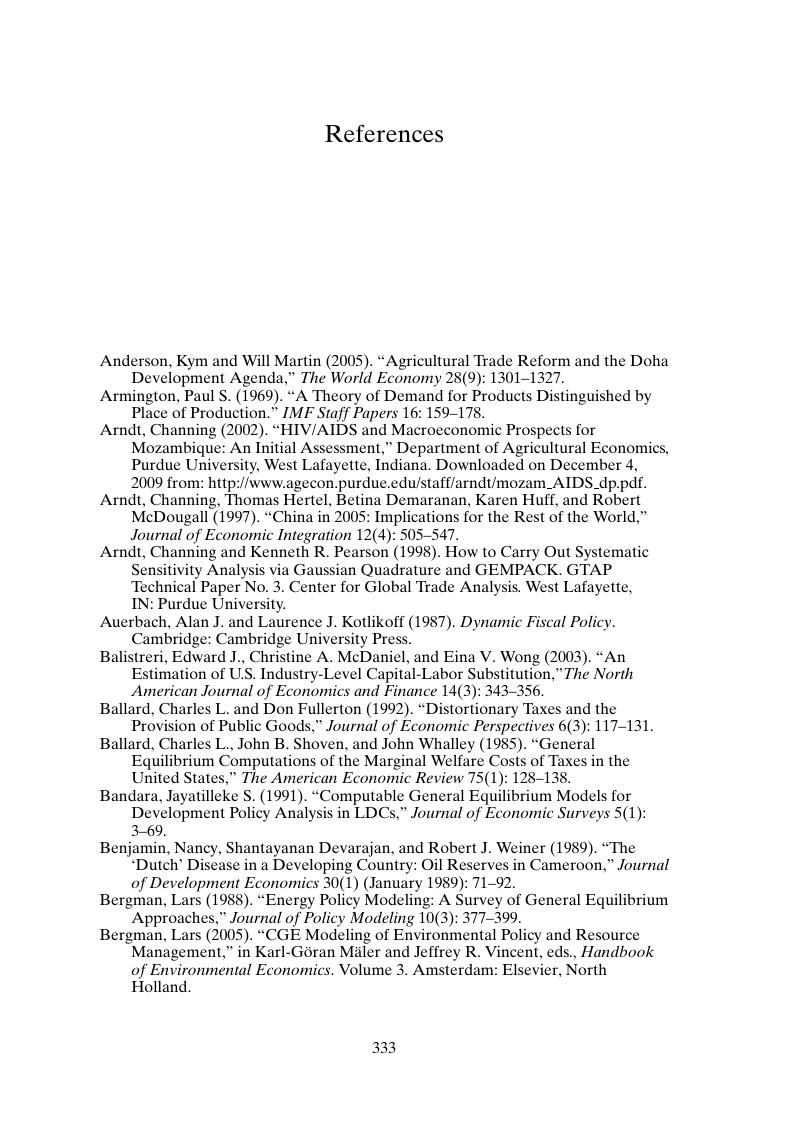Book contents
- Frontmatter
- Contents
- Text Boxes
- About This Book
- Acknowledgments
- 1 Introduction to Computable General Equilibrium Models
- 2 Elements of a Computable General Equilibrium Model
- 3 The CGE Model Database: A Social Accounting Matrix
- 4 Final Demand in a CGE Model
- 5 Supply in a CGE Model
- 6 Factors of Production in a CGE Model
- 7 Trade in a CGE Model
- 8 Taxes in a CGE Model
- 9 Conclusion: Frontiers in CGE Modeling
- Model Exercises
- Appendix
- Glossary
- Practice and Review Answer Key
- Model Exercise Answer Key
- References
- Author Index
- Subject Index
- References
References
Published online by Cambridge University Press: 05 June 2012
- Frontmatter
- Contents
- Text Boxes
- About This Book
- Acknowledgments
- 1 Introduction to Computable General Equilibrium Models
- 2 Elements of a Computable General Equilibrium Model
- 3 The CGE Model Database: A Social Accounting Matrix
- 4 Final Demand in a CGE Model
- 5 Supply in a CGE Model
- 6 Factors of Production in a CGE Model
- 7 Trade in a CGE Model
- 8 Taxes in a CGE Model
- 9 Conclusion: Frontiers in CGE Modeling
- Model Exercises
- Appendix
- Glossary
- Practice and Review Answer Key
- Model Exercise Answer Key
- References
- Author Index
- Subject Index
- References
Summary

- Type
- Chapter
- Information
- Introduction to Computable General Equilibrium Models , pp. 333 - 340Publisher: Cambridge University PressPrint publication year: 2011



